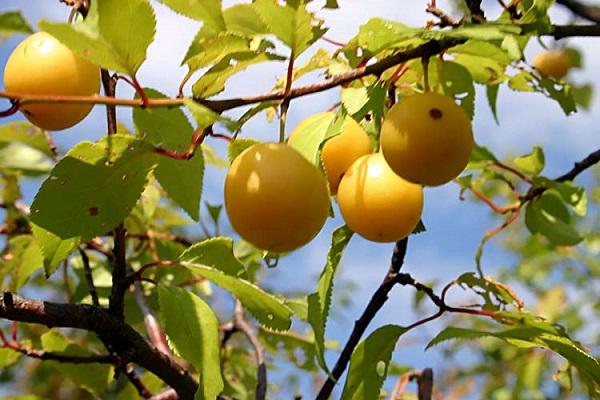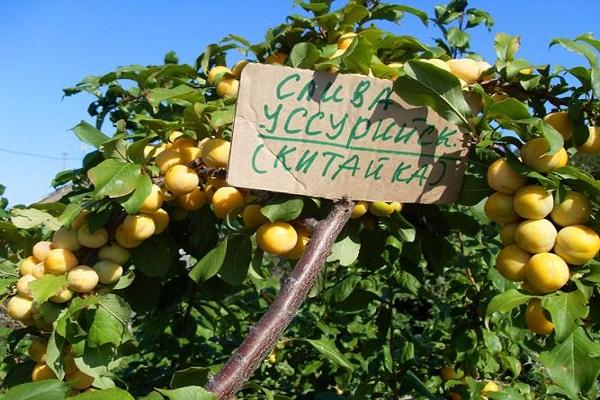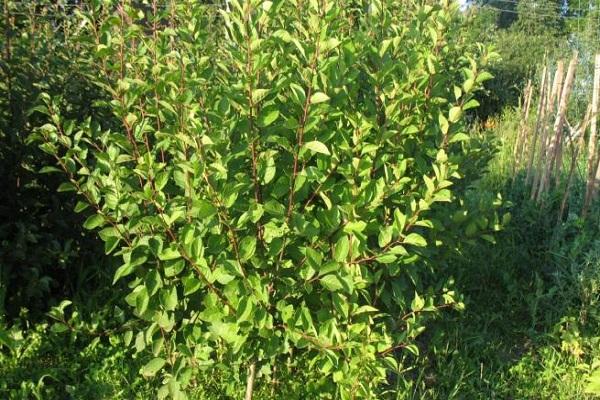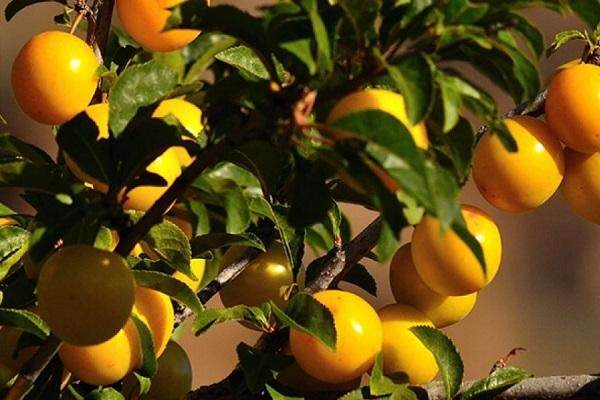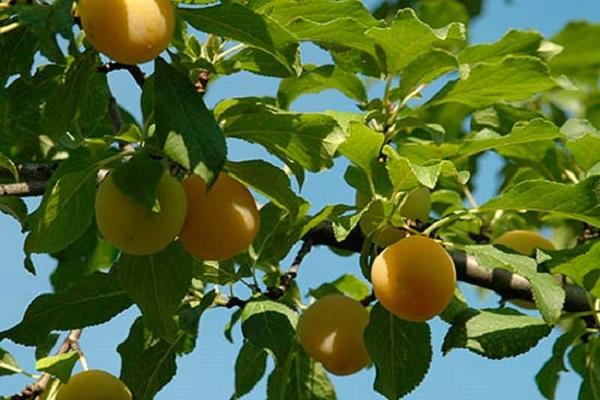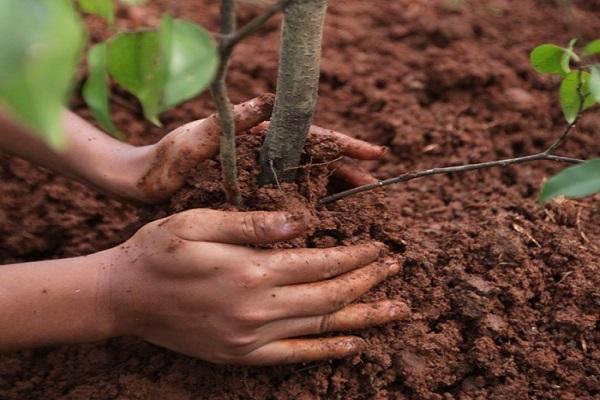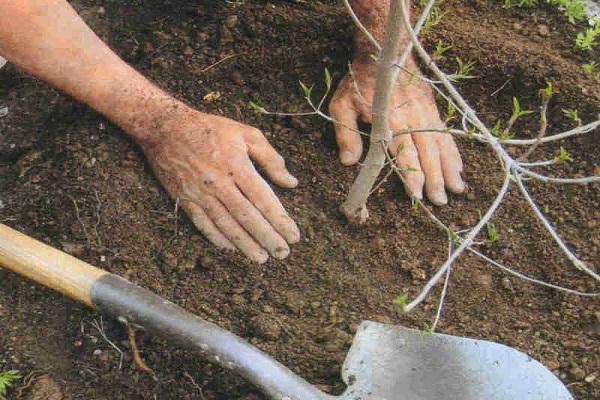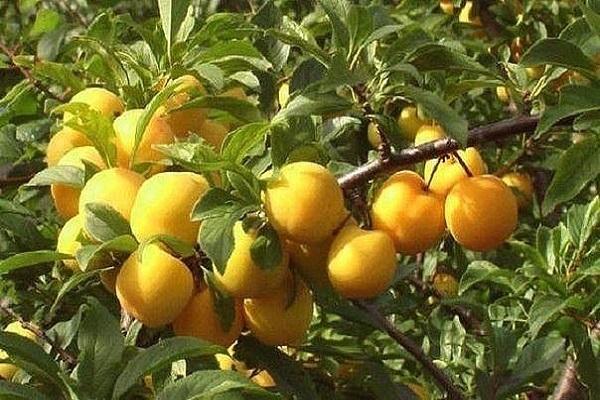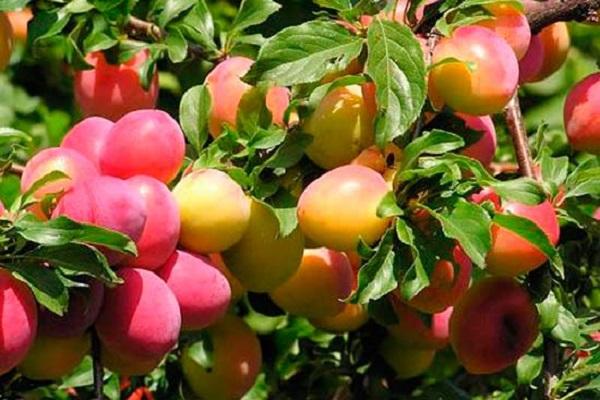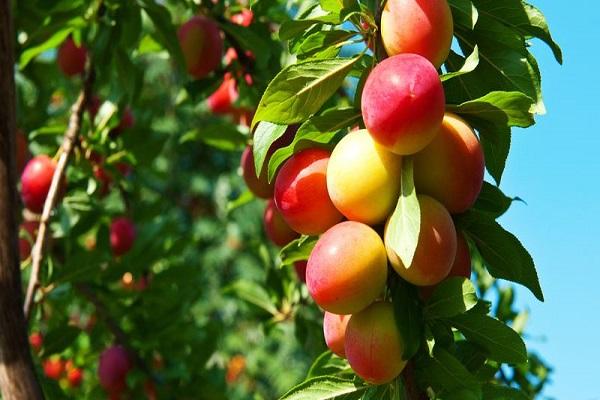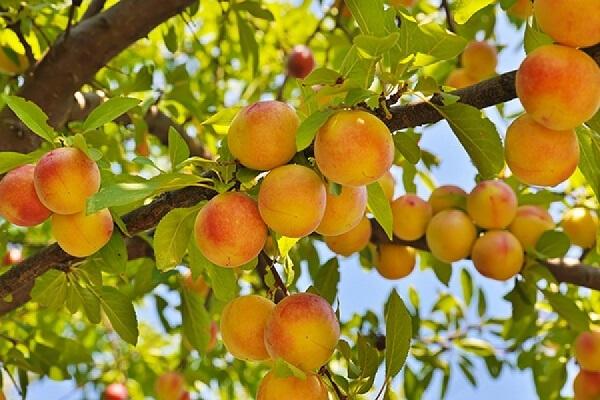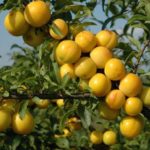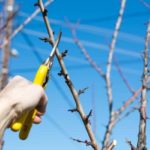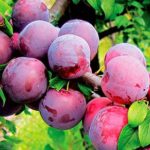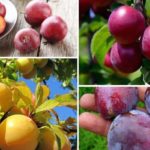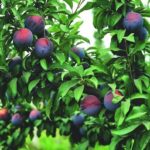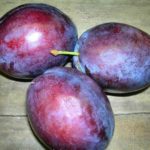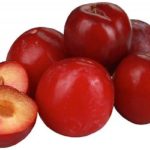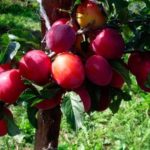Ussuriysk plum has proven itself exclusively on the positive side; it is valued for its resistance to adverse environmental factors and sub-zero temperatures. Thanks to this, this fruit crop can be cultivated everywhere, even in regions with harsh winters. In order to achieve the highest possible yields from the Ussuri plum, it is recommended that you familiarize yourself with the rules for planting it and the intricacies of its care.
- History of the breeding of the Ussuri plum
- Characteristics and features of culture
- Description of the tree
- Taste and appearance of fruits
- Pollinators
- Fruiting and productivity
- Frost and drought resistance
- Susceptibility to diseases and pests
- Required soil composition
- Application of fruits
- How to plant and grow a tree on a plot
- The best varieties of Ussuri plum and their description
- Covenant
- Festive
- Ural prunes
- Ussuri late
- Ussuri early
- Vesta
- Golden Niva
- Yolk
History of the breeding of the Ussuri plum
The homeland of the Ussuri plum is the Primorsky Territory. You cannot meet her in the Far East and China. The culture was discovered by Russian settlers on the ruins of an ancient village in the Primorsky Territory. After which, the plant was placed at the dacha, where the breeding work took place.
After some time, the Ussuri plum was actively grown in the gardens of the Far East. Through cross-pollination with high-quality forms of Chinese plum, specimens with a high level of adaptation to specific climatic conditions were bred. Thus, the Ussuri plum became a self-sufficient hybrid with increased frost resistance and productivity.
Characteristics and features of culture
A distinctive feature of the Ussuri plum is its frost resistance, which explains its active use as a material for breeding varieties resistant to low temperatures. The fruits have many beneficial properties. With their regular use, memory improves, immunity increases, and the risk of a heart attack decreases. In addition, plum has an antipyretic and wound-healing effect.
Description of the tree
The Ussuri plum is characterized as a low plant, but it cannot be classified as a dwarf plant. Its height is on average 2.5-3 meters, but there are specimens that are 4 meters tall. The color of the wood of a full-fledged tree is gray or brown. A feature of the Ussuri plum is the rounded shape of the crown, thin and fragile branches that point upward.
There are two types of Ussuri plum:
- With a thickened crown, externally similar to a cylinder, pyramid and panicle.
- With a sparse, vase-shaped crown.
The leaf apparatus of the Ussuri plum is distinguished by its light green color and smooth surface. The underground part of the plant is quite developed, located shallowly - superficially. This feature of the tree works against it - it tolerates drought painfully. In addition, when loosening the soil, the roots are often injured, which leads to the formation of shoots.
The flowering phase of the Ussuri plum occurs in May, before the leaf mass appears. Small snow-white flowers are formed in large numbers; they decorate the entire tree. They are not afraid of frosts down to three degrees.
Taste and appearance of fruits
The fruits of the Ussuri plum can be round, pear-shaped or cone-shaped. The color, depending on the variety, can be yellow, purple, dark cherry, light green, and also very dark – black. The consumer characteristics are high, the pulp is distinguished by its juiciness, sweet and sour taste and slight bitterness, and has many useful properties. Fruit sizes vary from 2 to 25 grams.
Pollinators
The Ussuri plum is not a self-fertile tree, which requires placing pollinating plants with a similar flowering period near it. The best option is to have 2-3 varieties of plums on the site; Sand Cherry is also suitable.
Fruiting and productivity
The Ussuri plum begins to produce a harvest already 3-4 years after it is planted in a permanent place; when grown from a seed, this period increases by 2 years. The tree produces a stable and abundant harvest for 20 years; it is possible to collect 15-20 kilograms from one plant.Harvesting should be done several days before reaching removable maturity, otherwise they will quickly crumble when fully ripe. Fruits should ripen in a warm room.
Since the Ussuriysk plum painfully tolerates a lack of moisture in the soil, it requires additional moisture during the dry season. The frequency of watering should be once every 10-12 days, taking into account 9-10 liters per planting.
Frost and drought resistance
The degree of frost resistance of the Ussuri plum is assessed as high. The tree can normally tolerate temperatures down to -40 degrees. The crop, in contrast to its increased winter hardiness, has a low level of drought resistance.
Susceptibility to diseases and pests
The Ussuri plum does not have any special immunity to major diseases and harmful insects. The plant is often attacked by codling moths, small aphids, sawflies, and leaf rollers. Of the diseases, it is oppressed by gray rot, clasterosporiasis, coccomycosis, and root canker.
Also, the tree does not have sufficient resistance to sooty fungus, rust, and fruit rot. To avoid problems in the future, the Ussuri plum must be treated with special agrochemicals and kept in conditions that are comfortable for it.
Required soil composition
For normal growth and development of the tree, it is recommended to choose an area with fertile soil and a neutral environment. To adjust the acidity level, reduce it, effectively use lime or dolomite flour at the rate of 200 grams per 1 square meter. For better rooting, the soil before planting should be enriched with useful substances: rotted manure, wood ash, superphosphate.
Application of fruits
The Ussuri plum harvest is distinguished by its versatility.It can be used for homemade preparations and for making compotes, juice, and desserts. The fruits taste very pleasant when eaten fresh.
How to plant and grow a tree on a plot
The best time for planting seedlings is spring, when the soil is warm enough. Work is mainly carried out in April at an air temperature of 8-15 degrees. The planting site should be well-lit and protected from draft winds.
The technology for planting Ussuri plums includes:
- Digging a hole 1 meter deep and measuring 80x80 centimeters.
- Installing a wooden peg 15-20 centimeters from the center of the hole. Its height should be 1-1.5 meters.
- Place and sprinkle the roots of the seedling so that the soil layer is 5-7 centimeters below the location of the root collar.
- Water the young plant with 2-3 buckets of water.
- Mulching the soil to retain moisture.
In order for the seedling to quickly adapt and grow, when planting it is necessary to straighten its roots in different directions. They should not be allowed to bend or overlap.
To water, you need to form a groove around the tree. To avoid oxygen starvation of the roots, the soil in the tree trunk circle should be loosened after each moistening. The formation of the crown begins from the second year of the plum’s life.
Feeding procedures before the flowering phase are carried out using potassium nitrate (30 grams per 10 liters of water). And after the flowers appear - with Zircon solution (3 grams per 5 liters of water). When the fruiting stage ends, the plum is fed with superphosphate at the rate of 30 grams per 10 liters of water.
The best varieties of Ussuri plum and their description
Among the popular varieties, which are distinguished by their relative ease of care and high yield, it is worth noting.
Covenant
Plum is a medium-ripening plant; the growing season is 60 days from the moment of flowering. It is recommended to grow it in regions with a temperate climate. Varietal characteristics: the tree is medium-sized (4-5 meters), the crown is wide pyramidal, the color of its shoots is burgundy, the color of the wood is brown.
The round purple fruits have a dense layer of waxy coating. The productivity indicators of the variety reach 60 kilograms per planting.
Festive
This variety attracts attention with lush and abundant flowering. The tree has a high degree of frost resistance (up to -40 degrees), yield indicators are almost 20 kilograms (from one planting). Despite the small size of the fruits, their taste is quite pleasant, harmonious, and the aroma is pronounced. The Prazdnichnaya plum enters the fruiting phase 4-5 years after planting in a permanent place.
Ural prunes
The crown of the plant is large and spreading. The height of the tree is about 2 meters, the yield is high, fruiting is stable. The consumer qualities of the fruit are excellent, tasting score 4.6 points. The weight of black and red plums is 12-16 grams. Winter hardiness is good.
Ussuri late
A distinctive feature of the variety are sweet and juicy fruits with a slight sourness. The harvest takes place in the second half of August. The tree produces fruits abundantly and periodically.
The variety shows high productivity when grown on moist and clay soil; it does not tolerate an acidic environment, in which it gets sick and bears little fruit. Resistance to low temperatures is high.
Ussuri early
The plant is intended for cultivation in regions with cold climates, where the period of low temperatures is quite long. Its crown is spreading, the fruits are small with yellow flesh and a fibrous structure. There is no bitterness in plums.
Vesta
Mid-season Ussuri plum performs well when grown in cold regions. The round, red fruits have a whitish coating visible. The consumer characteristics are high: the pulp is sweet and juicy, the sourness is not noticeable, the aroma is pronounced.
The harvest is carried out at the end of summer. The tree is not afraid of sub-zero temperatures and bears fruit consistently and abundantly.
Golden Niva
The two-meter planting forms a crown in the form of a deep basket. Fruiting occurs every year, the fruits are harvested in August. For pollination, varieties such as Red Ball, Russian Plum, and Skoroplodnaya should be located next to the Golden Niva.
The color of the pulp and skin is yellow, like a nectarine. Plums are distinguished by their juiciness, sweet taste and delicate structure. The bone is easily separated. Reviews about the variety are predominantly positive.
Yolk
The color of the fruit is bright yellow, round in shape, slightly flattened at the top. The taste characteristics of the variety are excellent: the pulp is sweet and juicy, the aroma is pronounced. The plant is endowed with sufficient immunity in relation to major ailments and parasitic individuals.
The variety is actively cultivated in regions with harsh winters, including the Urals. The planting site should be chosen in well-lit clearings, with nutritious soil and neutral acidity.
Ussuri plum is an excellent option for regions with cold climates and frequent temperature changes. Even a novice gardener can grow an abundantly fruiting tree.To obtain good results, it is enough to follow the basic recommendations for planting, care and give preference to frost-resistant varieties.

